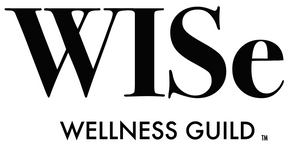
Persevering The Dip

Danielle Suerkamp, CFP, Founder of Well Spent Wealth Planning
When life doesn’t quite make sense, where do you turn for inspiration? For some it’s scripture, for others it’s literature or motivational quotes. For me, it’s music. There isn’t anything quite as satisfying to me as hearing a lyric that completely nails how I’m feeling in a moment or shifts my perspective to help me see things more clearly.
One recent weekend afternoon, I was home putting away laundry and listening to music when a lyric came streaming out of the speaker and hit me with one such moment of clarity. “These are the times when going up is not a straight line.”
The song is about being in a place of uncertainty and not knowing how to move forward. It’s about a tough time, but within the angst, there is an underpinning of hope that maybe the struggle is a necessary part of getting where you want to go. Perhaps feeling uncertainty, fear, exhaustion or defeat isn’t always a signal that we’ve veered off the path to success; perhaps it’s just that progress, or going up, isn’t the nice smooth ride we imagine it will be.
Logically, we know worthwhile endeavors involve ups and downs. Everyone who has ever taken a risk has concluded the payoff was worth the tradeoffs along the way. We decide it’s worth the sleepless nights and hectic schedules to grow our family. We decide unpredictable income and additional responsibility are worth the freedom and reward of running our own business. We decide it’s worth spending a little less or working a little longer to eventually retire and travel the world.
At the outset, our passion is the fuel that powers us through the challenges but eventually, our fuel reserves get depleted. The lack of sleep starts to make us crazy, the stress is too much to bear, the discipline proves too hard to maintain. Amid all this, it can be easy to forget why we started down the path at all. The payoff fades to the back of our minds and we are tempted to take the easier path.
Author Seth Godin refers to this moment as the dip. Somewhere in between the plateau, we were on when we started, and the higher plateau of success lies the dip. It’s the dark time, the rough patch, the middle of the marathon. When we’re in the dip, we can’t distinguish it from a dead-end. It doesn’t feel like a part of the journey toward success. It feels like the end of the journey.
The dip is where we are at our most vulnerable. Staying on track literally becomes a fight against our biology. During times of stress and emotion, the pre-frontal cortex, which is responsible for impulse control and long-term thinking, is outmatched and gets easily overpowered by the hedonistic amygdala. The amygdala doesn’t have the capacity for perspective. It can’t understand that the pain is something we signed up for as part of a larger plan. It just knows that we feel bad and want to remedy the situation in as immediate and as satisfying a way possible. It will tempt us to quit and many times, we do.

A cycle like this can be a great risk to us in our financial lives, especially as investors. In fact, we may be more vulnerable to the dips as investors than anywhere else in life simply because we are so unprepared for the inevitable challenges.
The beginning of our investment journey doesn’t come with the fanfare of our other ventures. We don’t throw showers or launch parties when we buy our first stock. We don’t anticipate the rush of our first capital gain the way we do our child’s first steps (at least I hope we don’t!). We enter the market because we had to check a box on our 401(k) form, not after careful consideration of the risks and a plan for how to overcome them. Despite how important the outcome will be to our lives, we often lack the information to understand what the dips will look like and when they come, we lack the passion to help us power through them.
Godin recommends a couple of things for getting through the dip. He suggests being very explicit about when to quit before we ever start on the path toward a goal. Define how much time, money, and energy you are willing to invest upfront and decide what the threshold will be for giving up. Essentially, take the power to decide away from our trigger-happy amygdala.
To keep things in the hands of our pre-frontal cortex, he suggests making a quitting contract with yourself. In the world of investing, this might look a lot like our investment policy statements. These contracts state the guidelines for how a portfolio will be invested and highlight the historical range of returns that can be expected over time.
Seth also encourages us to reserve our resources for the battles worth fighting. Every goal isn’t important enough to merit going through the dip. If we view our reason for investing as making money, we will be easily swayed toward bailing out during a market crisis. In those times, we need to remember why we’re really investing. It’s for personal freedom; it’s to give our family a better life; it’s for self-reliance, it’s to leave a legacy. We need a cause for which we are committed to persevering.
My lyrical epiphany tells me that to invest successfully we also have to change how we see the dip. Heroes aren’t made in the absence of obstacles. Where others see an insurmountable beast, a hero sees a dragon she’s yet to slay. The dips are when we prove to ourselves how committed we are to what we want and where we earn the pride and sense of accomplishment that comes from surmounting tough times.
If we channel our passion, anticipate the dips, and embrace them as a challenge when they come, we’ll see the bad times differently. They won’t look like the end; they will look like the times when going up is not a straight line.
Sign up for our newsletter for weekly wellness you can trust.
Join us on Instagram at @wise_wellness_guild for daily inspiration, community spotlights and wellness resources.

Leave a comment